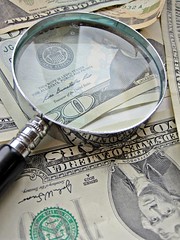What email marketing tips can you get from a party?
Both require planning, a good host (your business). interesting conversation, and happy people (customers). Sometimes, they even both have themes.
Without the proper planning, the party (or the email) will be a bust.
Here’s how to make sure your party (email newsletter) is a great one.
Send invitations and request RSVPs
If you have a party, you send out invitations. People then respond (and accept or decline). You don’t just grab people off the street and pull them in. Same thing with email marketing.
You invite people, and you wait for them to accept (you don’t just start sending them emails because you met them at a breakfast meeting).
Why are you having the party?
When you send out the invitations, you try to tell people why you’re having the party, and why they’ll enjoy it.
Offer them an invitation (your signup form), describe how great the party will be (your ebook, or your webinar), and then ask them to accept (opt-in and confirm).
You also give them information about the party and tell them what to expect when they get there. Is it a birthday? Do they have to bring gifts (pay), when is the party (how often will they get your email, or what time is the webinar), and why would they want to come (it’s their best friend’s birthday).
Make sure they confirm (opt-in and register) that they’re coming, and give them directions (how to sign up, what messages they will receive).
Greet your guests
Once that party gets under way, a good host greets each guest at the door. Likewise, send a welcome message to your new subscribers. Thank them for coming (signing up) and tell them a bit more about your party (the kinds of information they can expect to get from you). Show them around, point out the buffet and the bar. Give them a few links to relevant information on your site.
Stop by and chat
At a party, you mingle and make sure everyone’s having a good time. Check with your readers occasionally. Ask them for feedback with a survey. Or solicit ideas or comments (I add a PS telling my readers they can just hit reply to reach me).
Some guests leave early
Occasionally, a guest will decide your party is not for them. If someone unsubsribes, let them go. It’s not legal in the US. If too many people unsubscribe, take a look at your newsletter and find out why.
Party favors
At a party, you might give out silly hats or serve food and cake. Offer your newsletter readers goodies (just for signing up). For example, they might be the first to get a crack at a new (paid) service. Or, send the occasional, random free gift (an ebook, for example).
Invite your guests back
If you want to have another party (or start another newsletter), repeat the process. Invite your guests to the new party first (rather than automatically adding them to the guest list).





